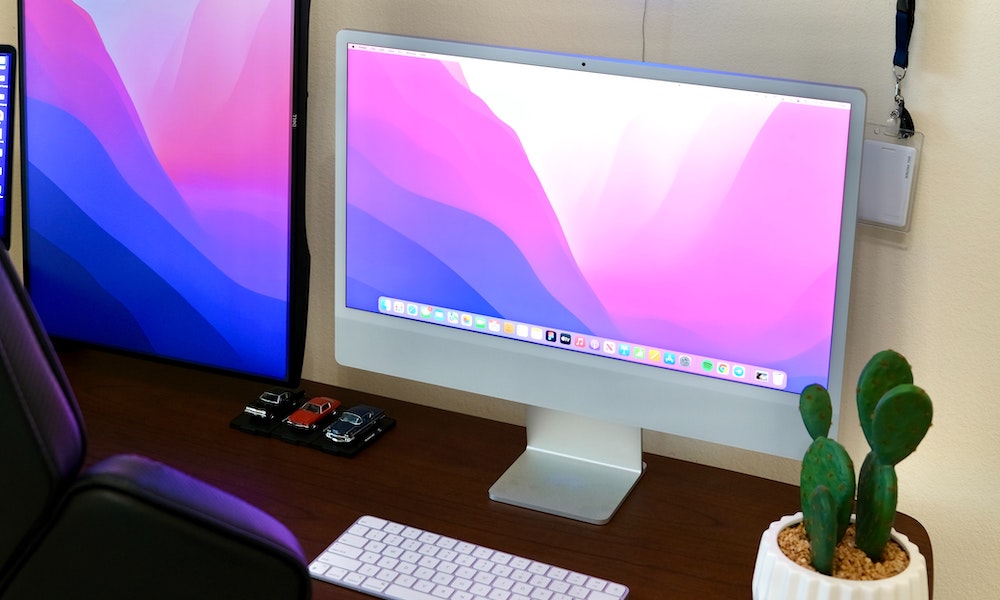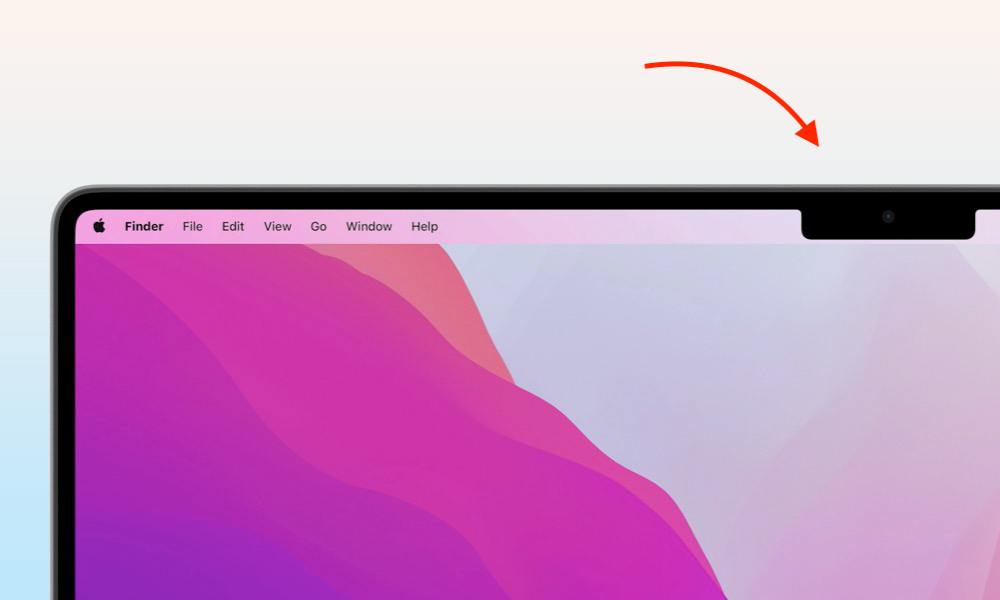Why Apple’s iMac Will (Probably) Get Face ID Before the MacBook Pro
 Credit: Lucas Hoang / Unsplash
Credit: Lucas Hoang / Unsplash
Toggle Dark Mode
Early reports of the notched display in Apple’s newest MacBook Pro screens led many to believe that Apple had plans to finally bring Face ID to the Mac, but now it looks like that was never in the cards — at least not for Apple’s laptops.
It wasn’t an unreasonable assumption, of course. When Face ID came to the iPhone X in 2017, it was naturally accompanied by a big notch to make room for the TrueDepth camera hardware needed to support it.
However, it turns out that Apple had a much simpler reason for putting a notch into the screen on the MacBook Pro.
To be fair, the iPhone X was also the first model to gain an edge-to-edge display, so Face ID or not, there needed to be room for the front-facing camera system.
With the latest MacBooks, Apple clearly had the same goal in mind — reducing the size of the bezel while still making room for the camera.
In the case of the MacBook Pro, however, the notch doesn’t really take anything away from the screen — it allows Apple to use space that was entirely wasted on previous MacBooks.
While it’s hard to say how much space Apple really needed, it clearly decided to embrace the notch design, rather than trying to shrink it. While there’s definitely no TrueDepth camera system in there, it does house a larger 1080p sensor, along with sensors for ambient light and colour to support features like the True Tone display. There’s also a camera status LED, which isn’t found on the iPhone or iPad, and that has to be placed a certain distance away from the camera to avoid light interference.
Still, with all that space, you may be wondering why Apple didn’t look at going with Face ID, but it appears that the company was faced with a design constraint in a different direction. It wasn’t the width of the notch, but the thickness of the screen that’s at issue here.
As Mark Gurman explains in his latest Power On newsletter, the screen is too thin to support the TrueDepth camera system as it exists now, and it looks like Apple hasn’t shown any interest in trying to re-engineer it. Put simply, the technology doesn’t exist.
At this point, the technology to embed Face ID into the thin MacBook displays doesn’t exist. So if Face ID comes to the Mac, I think it will be on an iMac or external monitor first. Apple has definitely been working on this, but time will tell if they launch it. Mark Gurman
If anything, Gurman adds that Face ID will make an appearance on the iMac long before it comes to the MacBook Pro, but that’s assuming that Apple does this at all. It’s probably telling that the rumoured iMac Pro isn’t expected to even have a notch in the display.
Sources suggest that Face ID was considered for the 24-inch M1 iMac, since there would have been plenty of room in the screen to accomplish that. The challenges with supporting Touch ID on an external keyboard likely also factored into those conversations, but in the end, Apple decided it was better to come up with a way to make a Magic Keyboard with Touch ID work, and clearly abandoned its plans to put Face ID into the iMac.
It’s anybody’s guess as to why Apple went in this direction. Only the company’s Mac hardware engineers and designers know for sure, and they’re not talking. It could have been something as simple as the cost of Face ID components, but there’s also some practical human interface reasoning as to why Face ID may not be as desirable on a Mac as it is on an iPhone or iPad.
Why Face ID Doesn’t Make as Much Sense on a Mac
Consider that, even on an iPad Pro, Face ID can be cumbersome when working with an external keyboard. Many interactions such as purchasing apps or making Apple Pay transactions require an extra confirmation step anyway, which on the iPad involves reaching up and pressing the Sleep/Wake button.
It’s also worth keeping in mind that for security reasons, the button used to confirm Face ID transactions is physically wired to the Secure Enclave. This prevents malicious apps or malware from authorizing transactions without your express consent. After all, Face ID can be triggered anytime you’re looking at your screen, so there has to be an extra step to make sure you really want to do what an app is asking you to do — especially when that involves spending money.
This means that even if Face ID came to the Mac, there would need to be a dedicated button somewhere to confirm Face ID transactions; however, the MacBook already has a button for that — and it already has a Touch ID sensor built-in.
That’s not to say that Face ID on the Mac would be completely pointless, as there are many things that Face ID is used for on an iPad that don’t require secondary confirmation, such as opening secured apps and even auto-filling passwords. However, it’s also easy to see how it may not be as big of a priority for a device that’s primarily driven by a keyboard.
[The information provided in this article has NOT been confirmed by Apple and may be speculation. Provided details may not be factual. Take all rumors, tech or otherwise, with a grain of salt.]








